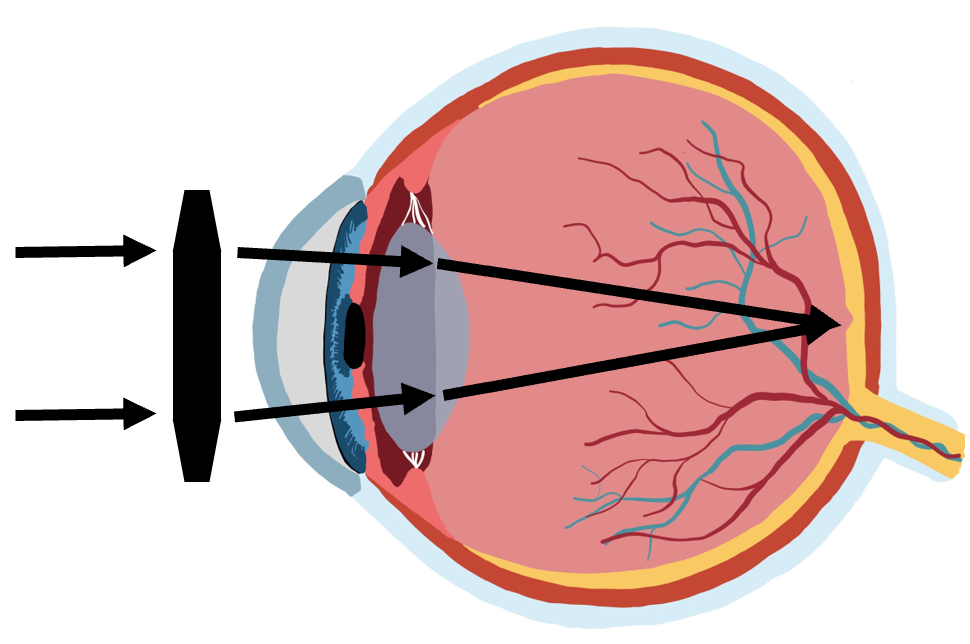Hyperopia (farsightedness)
- drbenwild
- May 2, 2023
- 2 min read
Updated: Feb 20, 2024
Dr Ben Wild
Overview |
As our bodies develop from birth until adulthood, our eyes have to change in lock-step. This process is called emmetropization (where the growth of the eye matches the change in focusing power). Most of the focusing power of the eye comes from the cornea, the clear tissue in front of the colored iris, and the intra-ocular lens, a clear tissue located through the pupil.

A sagittal view of an eye with light rays focusing perfectly on the retina.
Hyperopia, or farsightedness, is usually present at birth and unlike myopia, does not usually progress over time. Hyperopia occurs when the cornea and the lens focus light behind the retina (the back surface of the inside of the eye responsible for sensing light). When young, the intra-ocular lens is able to change shape to allow the light from both distant and near objects to be focused on the retina. The patient may experience symptoms like eye strain after prolonged near work or may be asymptomatic with mild hyperopia. Moderate to high hyperopia is usually symptomatic. As the eye ages, around late 30s or early 40s, the intra-ocular lens loses the ability to change shape and both distance and near vision become blurry.


A sagittal view of a hyperopic eye with light rays focusing behind the retina (top) and a view of a hyperopic eye with glasses that are helping focus the light on the retina (bottom).
Signs and Symptoms |
Signs
Often no signs, possibly esotropia (crossed eye).
Symptoms
Eyestrain, headaches, difficulty changing focus from far to near and/or vice versa.
Causes and Risk Factors |
Causes
Small eye or the focusing power of the cornea and lens is too weak.
Risk Factors
Genetics.
Prevention and Treatment |
Prevention
There are no preventative measures.
Treatments
· Glasses.
· Contact lenses (soft, hard, and orthokeratology).
· Laser eye surgery.
Prognosis |
Hyperopia does not lead to any eye diseases like myopia. However, smaller eye sizes can increase the risk of angle closure glaucoma. High levels of hyperopia can cause a an eye turn (inwards) around the age of 2-3 years old that can be corrected just with glasses.


